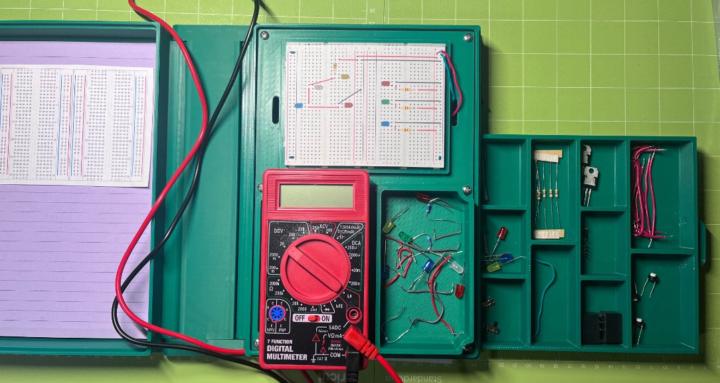Feb 13 • All Members
Unexpected Electronics Encounters
Yesterday I was at the Micro Center (a giant NY computer store) in Yonkers looking for components to cook up some project plans into prototypes when I crossed paths with a former teacher who was looking for LEDs and resistors to do an electronics demonstration at an after-school program in the Bronx.
I was struck with surprise that this guy had just been dropped in my lap with a lot of questions about building circuits. And questions that I was uniquely positioned to solve. The employee fielding the questions didn't really have a grasp of what the teacher wanted to do, so I navigated my embarrassment at poking myself into their conversation to try to help him out. I introduced myself by saying, "Yeah so my company actually makes kits that teach this."
He described his desire to do a demonstration of how a 9-volt battery drives an LED and eventually blows its rating without resistors. I told him that for the LEDs he had (maybe like 10mm --- HUGE ones) he could probably get away with running them on a battery but eventually they'd pop and become unusable. For most LED's, I said, he'd want to use a 220 ohm or 330 ohm resistor in series to cut the current down to what the LED could handle.
It was pretty cool to get to listen to what he wanted to do and what his thought-process was going into doing this demonstration for his students. I am obviously very passionate about introducing students of all ages to building electronics, which I believe to be unnecessarily limited and made unapproachable by many of the learning options out there. There's no reason not to empower everyone to **learn difficult things easily** (my tagline). To hear this retired teacher talk about taking the prototyper-approach to these kids in the Bronx made me feel very confident about the company mission for the prototype notebook and the relevance of our offer in satisfying these pain points.
I told him a bit about the prototype notebook and gave him the business info, but I was far more interested helping him out in his specific goals in that moment. I knew he didn't really come to the store to be sold on a product that gold-plated his current aims, even though I did mention how it basically solves all the friction points he was running into as an educator exploring electronics. I basically told him that he should invest in any of the cheap kits on the wall just for how good of a deal they are in the components he'd have access to and the project options. Of course, the issue with these options is their lack of attention in teaching philosophy and limited curriculum content.
He wasn't too sure about breadboards. At one point he said, "I don't see how anyone would actually use this in the real world," which I found very funny. I think that was definitely a blindspot I had, not realizing that when most people think of electricity and hardware they probably think of either soldering PCBs or like household electric wiring. I talked a bit about how breadboards are used in the real engineering world and how they could facilitate the teaching experience and allow for building and testing temporary circuits faster and more easily. He wasn't convinced and I wasn't going to tell him he was wrong.
He settled on some alligator-clips, a pack of resistors, and some LEDs for his demonstration. I felt lucky to find somebody to help and practice plugging my product to in person (especially an educator), and I hope that he left feeling positive about proceeding with his project.
In the oncoming year I intend to support STEM programs and after-school events for electronics experiences across New York and Pennsylvania, like the one this former teacher was trying to put together on his own time. With the prototype notebook students are empowered to explore electronics as individuals. But group educational events exist across the country and I am confident the tool-book will reduce friction in learning at the classroom/group level as well.
1
1 comment

skool.com/prototype-notebook-5229
The prototype notebook is engineering for the counter-culture. Join us to learn difficult things easily.
Powered by
